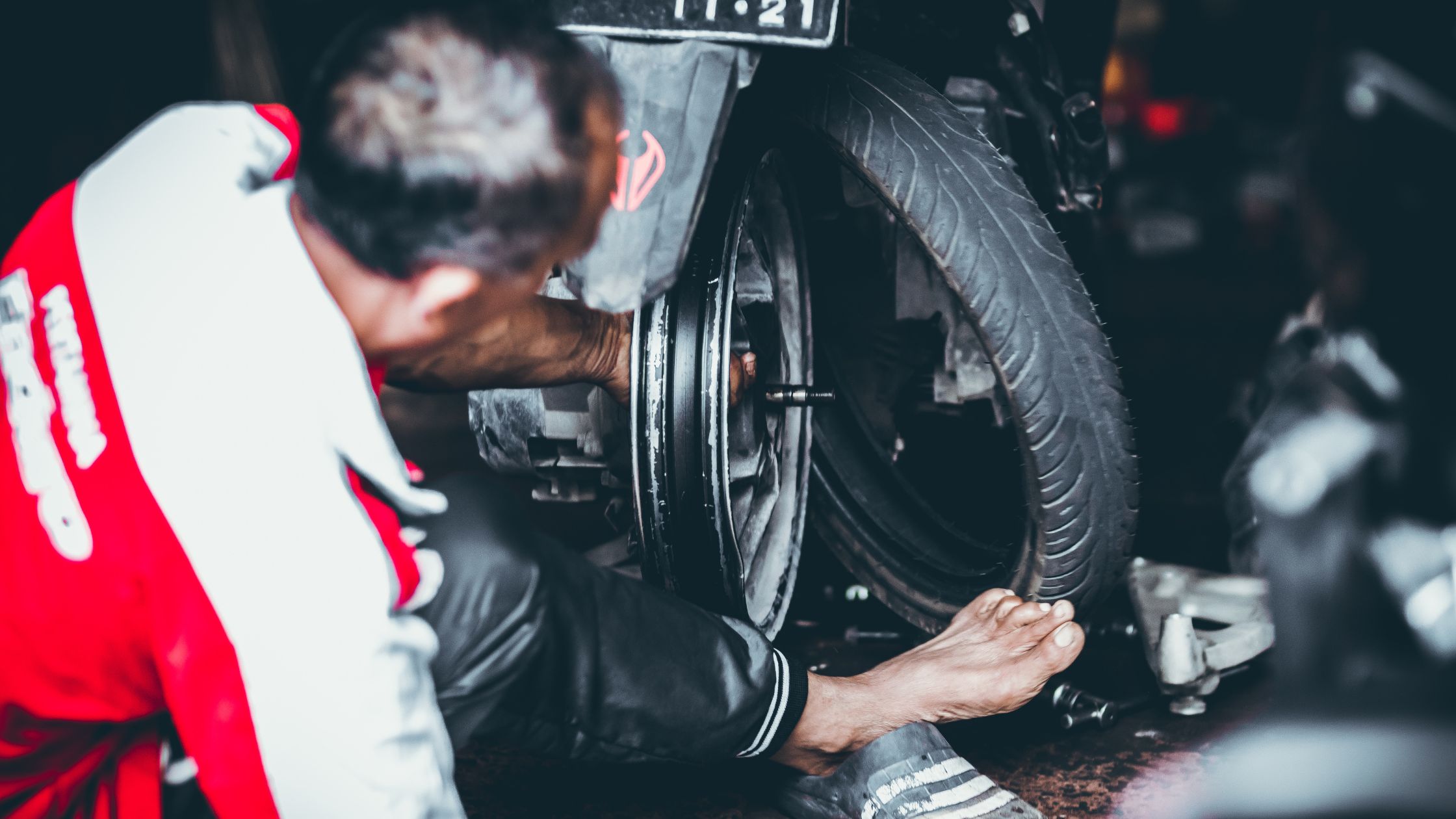Jika anda sedang mencari What Poluutan In Motor Car Engine, anda berada di tempat yang tepat! Disini saya akan mencoba membahas beberapa pertanyaan mengenai What Poluutan In Motor Car Engine.
What chemicals are emitted from cars?
Car emissions The air pollutants released in a car exhaust are due to undesirable chemical reactions inside the engine. The main pollutants are carbon monoxide (CO), unburned hydrocarbon fuel, and nitrogen oxides, which include gases such as nitric oxide (NO) and nitrogen dioxide (NO2).
What are the main pollutants emitted by petrol engine?
Petrol Engines Emit Fewer Fine Particles And Air Pollutants Among these pollutants are dioxides and nitrogen oxides, gases and fine particles, such as polycyclic aromatic hydrocarbons, ethane, and ethylene.
What air pollutants are of concern from a gasoline engine?
Gasoline use contributes to air pollution The vapors given off when gasoline evaporates and the substances produced when gasoline is burned (carbon monoxide, nitrogen oxides, particulate matter, and unburned hydrocarbons) contribute to air pollution.
Do cars emit carbon monoxide or carbon dioxide?
A typical passenger vehicle emits about 4.6 metric tons of carbon dioxide per year. This assumes the average gasoline vehicle on the road today has a fuel economy of about 22.0 miles per gallon and drives around 11,500 miles per year. Every gallon of gasoline burned creates about 8,887 grams of CO2.
What gases come out of a car exhaust?
The majority of vehicle exhaust emissions are composed of carbon dioxide, nitrogen, water vapor, and oxygen in unconsumed air. Carbon monoxide, unburned fuel, nitrogen oxides, and particulate matter such as mercury are also present in vehicle exhaust emissions in smaller quantities.
What chemicals are in car engines?
Automobile fuels are made up mostly of two elements hydrogen and carbon. These are therefore called hydrocarbons. During complete combustion in the engine, these two elements unite with a third element, the gas oxygen. Each oxygen atom connects up with two hydrogen atoms to form water.
What pollutants are in vehicle emissions?
Pollutants produced by vehicle exhausts include carbon monoxide, hydrocarbons, nitrogen oxides, particles, volatile organic compounds and sulfur dioxide. Hydrocarbons and nitrogen oxides react with sunlight and warm temperatures to form ground-level ozone.
What are the three basic sources of vehicle emissions?
Emissions come principally from three automotive sources: the exhaust, the fuel system (evaporative), and crankcase ventilation gases.
How do motor vehicles pollute the air?
Since the engines are consuming fuel and air and create heat in the combustion process, nitrogen from the air can be transformed into nitrogen oxides which are reddish brown gases that irritate the lungs and eyes. Pollutants emitted directly from vehicles are not the only cause for concern.
How much of our air pollution comes from motor vehicles?
Greenhouse gas (GHG) emissions from transportation account for about 27 percent of total U.S. greenhouse gas emissions, making it the largest contributor of U.S. GHG emissions.
How do cars affect air quality?
Passenger vehicles are a major pollution contributor, producing significant amounts of nitrogen oxides, carbon monoxide, and other pollution. In 2013, transportation contributed more than half of the carbon monoxide and nitrogen oxides, and almost a quarter of the hydrocarbons emitted into our air.
Can fumes from a car make you sick?
When fuel is burned in cars and trucks, carbon monoxide is released. A little carbon monoxide is okay, but if you spend a lot of time driving, inhaling too much can lead to carbon monoxide poisoning. Symptoms include weakness, confusions, nausea or vomiting, a dull headache, dizziness, and difficulty breathing.

What is the chemical reaction in a combustion engine?
A combustion reaction involves fuel and oxygen. Most fuels are hydrocarbons or a mix of hydrocarbons. When they react with oxygen, they produce carbon dioxide (CO2) and water (H2O). Combustion reactions release heat energy.
What chemical reaction happens in a diesel engine?
Diesel engines convert the chemical energy in fuel to mechanical energy. Energy is released in a series of combustions as fuel reacts with oxygen from the air. The chemical equation of diesel fuel combustion is 4 C12H23 +71 O2 –> 48 CO2 + 46 H2O.
What are the causes of vehicle pollution?
Traffic Congestions. In most urban cities, the number of motor vehicles is high and as such, there is a congestion of traffic. Technical Issues With Gasoline Engines. Vehicle Population. The Combustion Process. Global Warming. Poor Air Quality. Reduced Visibility. Health Issues and Complications.
Which fuel should be used in motor vehicles to reduce pollution?
Biodiesel is a diesel fuel made from vegetable oil, which is sulfur-free in its pure form and reduces particulate pollution when used.
What emits the most co2?
Transportation (27% of 2020 greenhouse gas emissions) – The transportation sector generates the largest share of greenhouse gas emissions. Greenhouse gas emissions from transportation primarily come from burning fossil fuel for our cars, trucks, ships, trains, and planes.
Do cars emit carbon monoxide?
What causes it? Carbon monoxide can come from any source that burns fuel. Common sources are cars, fireplaces, powerboats, wood stoves, kerosene space heaters, charcoal grills, and gas appliances such as water heaters, ovens, and dryers. Usually they cause no problems.
What is the biggest contributor to air pollution?
Burning Fossil Fuels The biggest contributors of air pollution are from industry sources and power plants to generate power, as well as fossil fuel motor vehicles. The continuous burning of fossil fuels releases air pollutants, emissions and chemicals into the air and atmosphere.
How do cars affect the ozone layer?
The effects of car pollution are widespread, affecting air, soil and water quality. Nitrous oxide contributes to the depletion of the ozone layer, which shields the Earth from harmful ultraviolet radiation from the sun.
How can we control car pollution?
Ride a bike or walk. If you are only going a short distance, consider riding a bike or walking instead of driving. Take public transit. Carpool. Avoid idling. Use alternative fuels.
What are the 5 effects of air pollution?
Long-term health effects from air pollution include heart disease, lung cancer, and respiratory diseases such as emphysema. Air pollution can also cause long-term damage to people’s nerves, brain, kidneys, liver, and other organs. Some scientists suspect air pollutants cause birth defects.
How much carbon monoxide does a car produce?
Internal combustion gasoline engines produce extremely high carbon monoxide concentrations. Even a properly tuned gasoline engine, will produce more than 30,000 parts per million (ppm) of CO in the exhaust stream before the catalytic converter.
Is methane worse than CO2?
Methane is more than 25 times as potent as carbon dioxide at trapping heat in the atmosphere. Over the last two centuries, methane concentrations in the atmosphere have more than doubled, largely due to human-related activities.
Terimakasih telah membaca What Poluutan In Motor Car Engine, semoga jawaban dari pertanyaan anda telah saya jawab semua. Semoga bermanfaat!
 Mobil Series Situs Mobil Terbaik se-antero Bintaro
Mobil Series Situs Mobil Terbaik se-antero Bintaro
